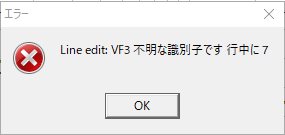Other Parts Discussed in Thread: TINA-TI,
Hi,
I would like to simulate the stability with each temperature on TINA-TI.
Simulating the stability, I need inputting the equivalent to calculate loop gain as below.

However, the error message appears when I executed with temperature stepping.
Could you tell me how to simulate stability with temperature stepping without error?
Best Regards,
Kuramochi



